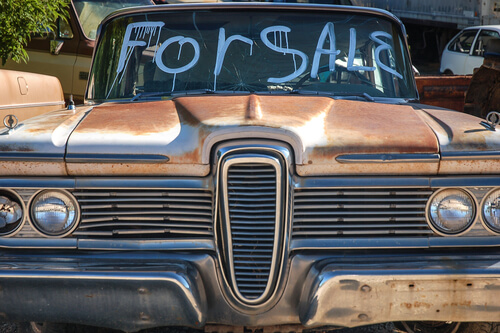While many millennials are opting out of car culture, our record auto loan debt demonstrates that America’s love affair with the automobile is far from over. The vast majority of us still live in places where not having a car amounts to an enormous inconvenience, if not an impossibility.
We need cars to move around our metro areas, and more often than not, we buy these machines with borrowed money. After several years of a car-loan-borrowing binge in America, default rates are starting to creep up, especially for subprime borrowers.
What’s subprime? It’s not good
When borrowers with bad credit go take out a car loan, they are charged significantly more than consumers with good credit. This is because interest rates on subprime auto loans are often north of 20 or even 30 percent — rates that many would consider abusive to the average consumer. The subprime auto loan industry is extremely lucrative, because lenders can make enormous returns on their money, while facing little downside. After all, if someone doesn’t pay their auto loan, they can easily go repossess the car and turn around to sell it again.
The amount of people who have subprime auto loans is higher than you might expect. Consider almost a quarter of auto loans fall into the “deep subprime category” (consumers with credit scores less than 500). Lately, default rates have been creeping up, making some worry that there’s a bubble in auto loans that goes far beyond the subprime category.
Not just subprime: Cheap money fuels a borrowing binge
To save the economy from certain doom after the Great Recession, the Federal Reserve lowered interest rates close to zero and loosened credit up. This fueled a bonanza in auto lending, where total loans outstanding in America have breezed past the trillion dollar mark, only surpassed in size by student loans and mortgages.
The last financial crisis, you might remember, was caused by people defaulting on mortgages, many of which were subprime. This has people drawing parallels between today’s alleged auto loan bubble and the housing bubble that quickly deflated in the late 2000s, leading to the Great Recession.
The party’s over
The growth of auto debt is being called unsustainable by many observers. Experion released a report earlier this year showing the average car loan today has cleared $30,000, something that has never been recorded. The average monthly payment has also passed the $500 mark, and the average term is now an astounding 68 months (that’s five years and eight months!).
Now, the Fed is starting to raise interest rates, which means the cost of borrowing will only grow. A study by the New York Fed suggests that every one percent increase in interest rates “could cause a 12 percent decrease in auto production.” Increases in interest rates, which are eventually bound to happen, could quickly take the wind out of car makers’ sails, and we could see yet another crisis in Detroit.
Another death blow for Detroit?
Less than a decade ago, the Great Recession brought automakers in Detroit to their knees. Teetering on the brink of bankruptcy, bigwig auto executives came to Washington to request a bailout. Of the big three (GM, Ford, Chrysler), two eventually ended up bankrupt, and the Federal Government lost billions of dollars in bailout money. Detroit, much like the big banks, is likely too big to fail.
Automakers face a very uncertain future, even in the short term. As interest rates go up, their profits will inevitably be compressed. Furthermore, with more people turning to ride sharing, and the prospect of self-driving cars on the horizon, we may be seeing a peak in auto ownership.
The takeaway
Having a personal automobile is incredibly inexpensive, and Americans continue to shoulder a scary amount of debt in order to finance their dream machines. Thankfully for us, millennials are more interested in living in walkable cities with a diversity of transportation options. Living in any of these public transit friendly cities, from Portland to New York, lessen or eliminate the need for auto ownership.
Turning away from personal auto ownership will relieve the average American consumer of an enormous debt burden. What’s less certain is how automakers around the globe will survive this shift in consumer patterns.
Have something to add to this story? Comment below or join the discussion on Facebook.
Header image: Shutterstock









































